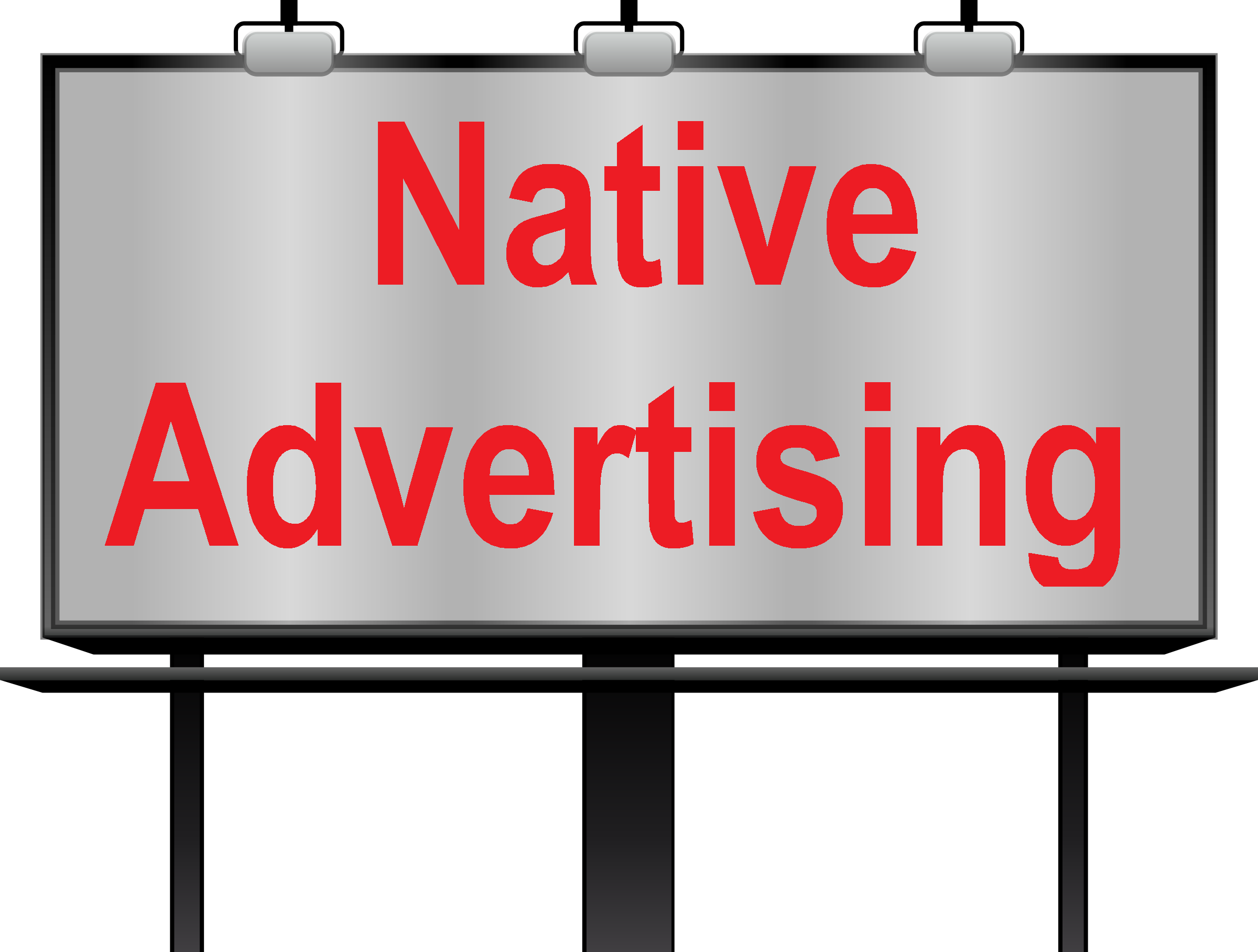 Native advertising is one of the fastest-growing areas of digital promotions. By 2021, native display ad revenue in the U.S. will make up 74% of total US display ad revenue, up from a 56% share in 2016, predicts BI Intelligence.
Native advertising is one of the fastest-growing areas of digital promotions. By 2021, native display ad revenue in the U.S. will make up 74% of total US display ad revenue, up from a 56% share in 2016, predicts BI Intelligence.
It’s also presents a lucrative opportunity for PR. PR professionals often create native ad content because of their storytelling skills. Many PR agencies create native ads for clients.
Many are Confused by Native Ads
Because native advertising is designed to look similar to a website’s editorial content, consumers may not realize the content is an ad. That creates a consumer deception that can cause problems for both sponsors and publishers. Despite new FCC guidelines and enforcement actions, native advertising remains a “Wild West” and publishers continue to label and disclose sponsored content in different ways, some of it confusing, according to content marketing firm Contently.
In a Contently survey with the Tow-Knight Center at CUNY and Radius Global Market Research, 54% people shown a native ad couldn’t correctly identify the company that had paid for it. In addition, 54% said they had felt deceived by native advertising in the past, and 77% didn’t recognize native ad content as advertising.
The Contently study refutes the assertion that brands benefit if consumers don’t realize native ads are sponsored content. In one example, most readers recognized a Wendy’s native ad as an ad, yet 54% were still more likely to buy Wendy’s food. “Consumers are open to stories about the brand, as long as the story is high-quality,” Contently states.
The Impact on Public Relations
Publishers and brands that sponsor the ads risk losing credibility and trust if consumers are confused. They also risk FTC penalties PR damage for improper disclosures. Guidelines require anyone who endorses a product or service on a blog or social media to disclose if they received free products or compensation.
A new white paper from the Institute for Public Relations analyzes PR’s role in native advertising and how the FTC regulations of native advertising impacts PR. These are key takeaways in an IPR infographic.
Understand the full body of the law. The regulations on native advertising work in tandem with other FTC guidelines on endorsement and social media promotions. Successful native advertising creation requires understanding how all the regulations fit together.
Properly disclose sponsorship if there is any chance of consumer confusion. The FTC policy statement exempts from disclosure only the most obvious promotional messages, though it does recognize logistical and technological limitations of disclosures on social media platforms and mobile devices.
Research how consumers react to the native advertising content. Like other forms of advertising, native ads are best tested using focus groups and other methods to determine the risk of consumers being deceived. Environmental scanning after publication can offer additional insight into the possibility of confusion among consumers over the content and its sponsorship.
“The fact that native advertising is used by consumers in a unique way suggests that online environmental scanning may be an absolute necessity in order to reduce liability for organizations,” states report author Cayce Myers, an IPR research editor and an assistant professor at Virginia Tech’s department of communication.
FTC Enforcement of Regulations
The FTC judges on a case-by-case basis. The FTC places liability on everyone involved in the native advertising process – both content creators and clients. Content producers must make the ultimate decision of whether to give a disclosure. If there’s doubt, there should be disclosure.
Only enforcement actions will reveal how the FTC will apply their guidelines on native advertising. “It is important for practitioners to stay current on these developing trends as these new guidelines are applied to industry,” Myers advises.
Bottom Line: Clear disclosures for native advertising protect the brand’s reputation and actually improve the ads’ effectiveness. It’s essential for PR to take a leading role in assuring adequate disclosures, understand FTC guidelines and stay informed about its enforcement actions.
William J. Comcowich founded and served as CEO of CyberAlert LLC, the predecessor of Glean.info. He is currently serving as Interim CEO and member of the Board of Directors. Glean.info provides customized media monitoring, media measurement and analytics solutions across all types of traditional and social media.




